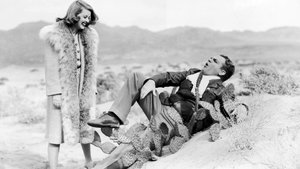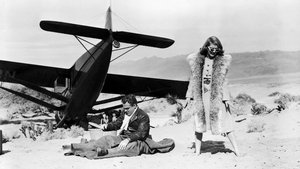Contact: info@alwanfilm.com
Video Sources 0 Views

Synopsis
The Bride Came C.O.D. 1941 Colorized Review: A Screwball Comedy Classic Revisited

Introduction
In the golden age of screwball comedy, few films capture the spirit of romance and laughter as well as The Bride Came C.O.D. (1941). Directed by William Keighley and starring James Cagney and Bette Davis, this film delivers a unique twist on the classic “opposites attract” trope, taking viewers on a hilarious and heartfelt journey across the American West. This article delves into the characters, story, and broader impact of The Bride Came C.O.D., exploring how the film’s comedic elements and iconic performances create a lasting impression. In addition, we’ll examine how the film has aged over time, the production choices that make it stand out, and its reception at release compared to today’s perspectives on classic screwball comedies.
Check The Full Colorized Movies List
Check Our Colorized Movies Trailer Channel
Understanding The Bride Came C.O.D. 1941 Colorized: Director, Cast, and Genre
Director’s Vision and Genre
The Bride Came C.O.D. was directed by William Keighley, a director known for his deft touch with comedy and his work across diverse genres, from gangster films to musicals. Keighley’s direction emphasizes the contrasts between the film’s leads, throwing the glamorous heiress and the no-nonsense pilot into situations where they’re forced to work together despite their obvious differences. The film falls into the screwball comedy genre, known for its rapid-fire dialogue, outlandish scenarios, and the use of romance as both a narrative and comedic tool. Keighley uses these elements to full effect, creating a story that’s as charming as it is laugh-out-loud funny.
The Iconic Performance of James Cagney and Bette Davis
The film’s success is due in no small part to its remarkable leads. James Cagney, already an established star known for his roles in gangster films, surprised audiences with his comedic turn as Steve Collins, a tough-talking pilot hired to “kidnap” a runaway bride. Cagney’s physicality, comedic timing, and chemistry with Bette Davis make his performance unforgettable. Davis, meanwhile, shines as Joan Winfield, the spoiled, wealthy heiress who ends up handcuffed to Cagney’s character in a series of increasingly ridiculous situations.
Both actors showcase a new side of their talent in this film. Davis, known primarily for her dramatic roles, demonstrates an impressive comedic flair, balancing the character’s initial spoiled demeanor with genuine charm as Joan’s walls begin to break down. Together, Cagney and Davis bring humor, heart, and a palpable chemistry that elevate the film.
Exploring the World of The Bride Came C.O.D. 1941 Colorized: Plot and Characters
Detailed Synopsis
The story begins with Joan Winfield (Bette Davis), a headstrong heiress, planning to elope with her bandleader boyfriend, Allen Brice (Jack Carson). Joan’s father, Lucius K. Winfield, disapproves of the match and hires pilot Steve Collins (James Cagney) to prevent the marriage by kidnapping Joan and delivering her to him in exchange for $10,000. The plan is simple: Steve will “ship” Joan to her father C.O.D., meaning “cash on delivery.”
However, the journey doesn’t go as planned. Steve’s plane encounters trouble, and he’s forced to make an emergency landing in a remote desert town. The mishap leaves Joan and Steve stranded in the middle of nowhere, handcuffed together with no means of escape. As they search for a way back, they face a series of comedic challenges, from bumbling locals to misunderstandings that lead to Joan’s and Steve’s gradual bonding.
The plot unfolds as a series of misadventures, with Joan and Steve’s dynamic evolving from mutual animosity to a grudging friendship and, eventually, romance. The film’s humor is rooted in their clashes and the absurdity of their situation, creating a storyline that’s as endearing as it is entertaining.
Supporting Characters and Their Roles
Supporting characters add further flavor to the plot. Jack Carson as Joan’s fiancé, Allen, plays the clueless but charming foil, while Eugene Pallette steals scenes as Joan’s exasperated father, Lucius. Lucius’ larger-than-life presence and his desperation to control his daughter’s choices bring additional humor to the film, showcasing the classic theme of wealthy family dynamics in screwball comedies.
Production Design and Cinematography Choices
The Bride Came C.O.D. captures the rugged beauty of the American West, which serves as the perfect backdrop for the film’s unfolding drama. The desert scenes, filmed in the California and Arizona deserts, add authenticity to the story, creating a stark contrast between Joan’s glamorous world and the rugged terrain she’s forced to navigate. Cinematographer Ernest Haller, who often collaborated with Bette Davis, brings a visual style that enhances the film’s setting, adding an almost documentary-like realism to the remote desert locations.
The use of natural landscapes plays a significant role in the narrative. By placing Joan and Steve in such an isolated setting, the film underscores the idea of “stripping away” superficiality. As they encounter the harshness of the environment, their true personalities emerge, leading to character growth and the blossoming of romance.
The Art of Screwball Comedy
Understanding Screwball Tropes
The Bride Came C.O.D. exemplifies the tropes of screwball comedy, with its opposites-attract narrative, witty banter, and unlikely romance. This genre emerged during the 1930s and 1940s, capturing audiences with its combination of humor, romance, and social commentary. Screwball comedies often feature wealthy or privileged characters who are “brought down to earth” through romantic entanglements with more grounded counterparts. The film uses these elements to maximum effect, creating a story that feels both timeless and relatable.
Development and Legacy of the Genre
The screwball comedy genre has left a lasting impact on film, influencing romantic comedies for decades to come. The Bride Came C.O.D. contributes to this legacy, standing out for its unique premise and the charisma of its leads. The film’s ability to balance slapstick humor with genuine emotion exemplifies the genre’s strengths, showcasing why screwball comedies have remained beloved by audiences worldwide.
The Impact of The Bride Came C.O.D. 1941 Colorized on Bette Davis’s Career
Embracing Comedy
Bette Davis was primarily known for her dramatic roles, often portraying intense, multi-faceted characters in films like Jezebel (1938) and Dark Victory (1939). The Bride Came C.O.D. marked a significant departure from her usual roles, giving her an opportunity to showcase her comedic talent. Her performance as Joan Winfield reveals a lighter, more playful side of Davis that contrasts with her reputation as a dramatic powerhouse. Davis herself noted that the film was a fun break from her usual work, and audiences responded well to her ability to deliver comedic lines with her characteristic intensity.
The Film’s Role in Cagney’s Career
For James Cagney, The Bride Came C.O.D. allowed him to break away from his gangster persona and demonstrate his range as an actor. His performance as the tough-but-kind-hearted pilot is one of his most memorable comedic roles, proving that he could excel in genres beyond crime and drama. Cagney’s comedic timing and physicality, particularly in scenes where he and Davis navigate the challenges of being handcuffed together, make the film a standout in his career.
Themes Explored in The Bride Came C.O.D. 1941 Colorized
Wealth, Independence, and Gender Roles
The film explores themes of wealth, independence, and gender roles, with Joan embodying the archetype of a spoiled heiress whose privilege has shielded her from real-world struggles. Her forced journey through the desert with Steve strips away these layers, allowing her to discover inner strength and resourcefulness. The dynamic between Joan and Steve also reflects the gender norms of the time, with Steve’s rugged masculinity and Joan’s gradual embrace of vulnerability playing into the era’s cultural expectations of romantic partnerships.
Love, Humor, and Transformation
The Bride Came C.O.D. uses humor to highlight the transformative power of love. As Joan and Steve confront their differences and work together to survive, they both undergo personal growth. Joan’s character arc—from a stubborn heiress to a compassionate partner—mirrors Steve’s journey toward opening up and embracing his softer side. Through humor and romance, the film underscores the idea that love can bring out the best in people.
Reception and Legacy of The Bride Came C.O.D. 1941 Colorized
Initial Reviews and Audience Reactions
Upon its release, The Bride Came C.O.D. received generally positive reviews, with critics praising the chemistry between Cagney and Davis. Audiences enjoyed the film’s mix of romance and comedy, and it performed well at the box office. Some critics noted that Davis’s departure from dramatic roles was a refreshing change, while Cagney’s ability to excel in comedy further solidified his reputation as a versatile actor.
Modern Perspectives
Today, The Bride Came C.O.D. is regarded as a classic screwball comedy, beloved for its witty dialogue, strong performances, and timeless appeal. The film is celebrated for showcasing Bette Davis and James Cagney in unconventional roles, allowing fans to see a different side of these legendary actors. While some aspects of the film’s humor and gender dynamics may feel dated to modern audiences, its core themes of love, growth, and self-discovery continue to resonate.
Where to Watch The Bride Came C.O.D. 1941 Colorized Online
The Bride Came C.O.D. is available for viewing on various streaming platforms, making it accessible to both new and longtime fans. The film can be found on services like Amazon Prime Video, HBO Max, and Turner Classic Movies, which often feature a selection of classic films. Additionally, DVD and Blu-ray versions of the movie are available for purchase.
FAQs About The Bride Came C.O.D. 1941 Colorized
Q: Who directed The Bride Came C.O.D.?
A: The film was directed by William Keighley, known for his work in a range of genres, including comedy and drama.
Q: What makes The Bride Came C.O.D. a screwball comedy?
A: The film features classic screwball elements like rapid-fire dialogue, a “battle of the sexes” dynamic, and a plot driven by misunderstandings and absurd situations.
Q: How did Bette Davis and James Cagney feel about their roles in the film?
A: Both Davis and Cagney enjoyed stepping outside their usual dramatic roles. Davis appreciated the opportunity to explore comedy, while Cagney found the film’s comedic physicality a refreshing change.
Conclusion
The Bride Came C.O.D. (1941) stands as a testament to the enduring appeal of screwball comedy, combining humor, romance, and character growth to create a film that still resonates with audiences today. William Keighley’s direction, combined with unforgettable performances from James Cagney and Bette Davis, elevates the film from a lighthearted comedy to a cherished classic. As viewers continue to enjoy its timeless humor and heartfelt moments, The Bride Came C.O.D. remains a beloved entry in the canon of screwball comedies.














